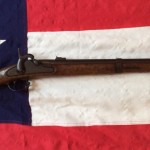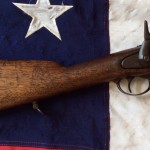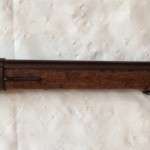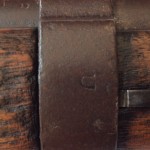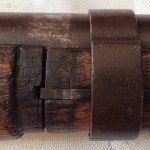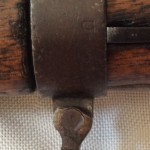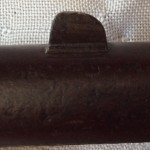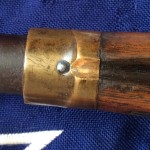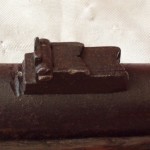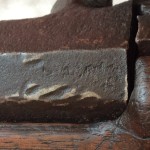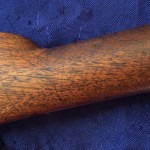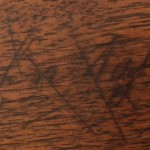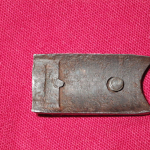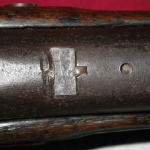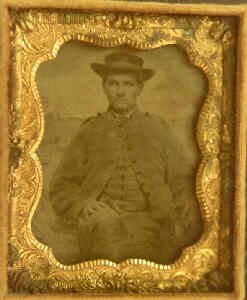- 1862 Richmond Carbine
- 1862 Richmond Carbine, Shoulder Stock
- Richmond Carbine, Forward Stock & Barrel
- Richmond Carbine, Rear Barrel Band
- Richmond Carbine, Split Stock
- Richmond Carbine, Front Barrel Band
- Richmond Carbine, Front Sight
- Richmond Carbine, Brass Nose Cap
- Richmond Carbine, Rear Sight
- 1862 Richmond Carbine, Proofs
- 1862 Richmond Carbine, Checking
- Richmond Carbine, John Taylor 9th Virginia Cavalry, Company A
- 1862 Richmond Carbine Back of Lock Plate & Exposed Cavity
- 1862 Richmond Carbine Rear Sight Steady Pin
- 1862 Richmond Carbine Rear Sight Steady Pin Mortise
Fast forward 150 years, I’m at the Civil War Gun Show at Gettysburg Pa. hoping to find the Confederate Carbine that’s on my wish list. I’m with my wife (Melinda) and her instructions are to help me find a Richmond Carbine and negotiate a price, which is her expertise. It seems as though non collectors don’t have an emotional connection so there not as likely to over pay for the item there negotiating for. So were walking up and down the aisles and there’s a few OK carbines but there in bad to poor condition and I had my heart set on a cleaner version. When finally there it is the Holy Grail of Carbines, an 1862 Richmond Virginia Low Hump Carbine in good condition. I break down the Carbine hoping that it’s historically accurate. First the lock plate then the barrel next the stock and it seems to be 100% correct. The metal all of which is Southern made (except one barrel band and the butt plate) is got a brown patina (not rust) that is smooth to the touch the barrel has a front pinched sight, the hammer is southern made everything is what you hope to find in an early model Richmond Carbine. The stock is probably the neatest of all the features the carbine has to offer. The stock is split into 2 pieces under the barrel band closest to the lock plate and there are 2 staples holding it together. I’ve read about these types of Confederate guns and I’ve even seen a few in books but I had never held one.
So to make a long story short I fall in love with the Carbine and my wife works here magic negotiating the best price possible while I’m salivating in the next aisle of the show, I went to the next aisle because I didn’t want to show my hand to the seller who might not have moved off his price.
We spend the rest of the weekend in Gettysburg doing battlefield exploration type stuff, having dinner, drinks and the best pretzels I’ve ever eaten at the Irish Pub. Mean while I can’t wait to get home break down my new Carbine and study it from top to bottom.
We finally get home and there I go taking my new toy apart hoping to find what nobody else was able to find. I use gun oil to clean everything hoping it may reveal that one thing that everyone else missed and low and behold there it is on the left side of the stock a name carved (ever so likely)into the wood, John Taylor.
So then it becomes my mission to learn more about John William Taylor. It turns out John Enlisted April 21st 1861 in Stafford Virginia, roster of the 9th Virginia Cavalry, Company A and served for the duration of the war. We know that all the Carbines made at the Richmond Armory were issued to Virginia Cavalrymen; we know John was promoted to Cpl. Early 1863 which should have given him leverage in getting issued the Carbine. So it’s fair to say that This John William Taylor carried this Carbine, HOW NEAT IS THAT!
This is just one of the many Civil War stories I’m hoping to share with anyone willing to listen and I encourage you to tell one of your neat stories about Civil War finds and artifacts.
If you have any thoughts or questions please contact Eugene West at civilwararsenal@yahoo.com

